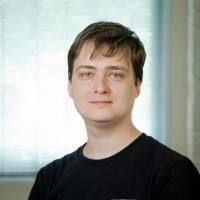Gaps in receipt of regular eye examinations among medicare beneficiaries diagnosed with diabetes or chronic eye diseases.
Date
2014-12
Journal Title
Journal ISSN
Volume Title
Repository Usage Stats
views
downloads
Citation Stats
Attention Stats
Abstract
OBJECTIVE: To examine a wide range of factors associated with regular eye examination receipt among elderly individuals diagnosed with glaucoma, age-related macular degeneration, or diabetes mellitus (DM). DESIGN: Retrospective analysis of Medicare claims linked to survey data from the Health and Retirement Study (HRS). PARTICIPANTS: The sample consisted of 2151 Medicare beneficiaries who responded to the HRS. METHODS: Medicare beneficiaries with ≥ 1 of the 3 study diagnoses were identified by diagnosis codes and merged with survey information. The same individuals were followed for 5 years divided into four 15-month periods. Predictors of the number of periods with an eye examination evaluated were beneficiary demographic characteristics, income, health, cognitive and physical function, health behaviors, subjective beliefs about longevity, the length of the individual's financial planning horizon, supplemental health insurance coverage, eye disease diagnoses, and low vision/blindness at baseline. We performed logit analysis of the number of 15-month periods in which beneficiaries received an eye examination. MAIN OUTCOME MEASURES: The primary outcome measure was the number of 15-month periods with an eye examination. RESULTS: One third of beneficiaries with the study's chronic diseases saw an eye care provider in all 4 follow-up periods despite having Medicare. One quarter only obtained an eye examination at most during 1 of the four 15-month follow-up periods. Among the 3 groups of patients studied, utilization was particularly low for persons with diagnosed DM and no eye complications. Age, marriage, education, and a higher score on the Charlson index were associated with more periods with an eye examination. Male gender, being limited in instrumental activities of daily living at baseline, distance to the nearest ophthalmologist, and low cognitive function were associated with a reduction in frequency of eye examinations. CONCLUSIONS: Rates of eye examinations for elderly persons with DM or frequently occurring eye diseases, especially for DM, remain far below recommended levels in a nationally representative sample of persons with health insurance coverage. Several factors, including limited physical and cognitive function and greater distance to an ophthalmologist, but not health insurance coverage, account for variation in regular use.
Type
Department
Description
Provenance
Subjects
Citation
Permalink
Published Version (Please cite this version)
Publication Info
Sloan, Frank A, Arseniy P Yashkin and Yiqun Chen (2014). Gaps in receipt of regular eye examinations among medicare beneficiaries diagnosed with diabetes or chronic eye diseases. Ophthalmology, 121(12). pp. 2452–2460. 10.1016/j.ophtha.2014.07.020 Retrieved from https://hdl.handle.net/10161/14810.
This is constructed from limited available data and may be imprecise. To cite this article, please review & use the official citation provided by the journal.
Collections
Scholars@Duke

Frank A. Sloan
Professor Sloan is interested in studying the subjects of health policy and the economics of aging, hospitals, health, pharmaceuticals, and substance abuse. He has received funding from numerous research grants that he earned for studies of which he was the principal investigator. His most recent grants were awarded by the Robert Wood Johnson Foundation, the Center for Disease Control, the Pew Charitable Trust, and the National Institute on Aging. Titles of his projects include, “Why Mature Smokers Do Not Quit,” “Legal and Economic Vulnerabilities of the Master Settlement Agreement,” “Determinants and Cost of Alcohol Abuse Among the Elderly and Near-elderly,” and “Reinsurance Markets and Public Policy.” He received the Investigator Award for his work on the project, “Reoccurring Crises in Medical Malpractice.” Some of his earlier works include the studies entitled, “Policies to Attract Nurses to Underserved Areas,” “The Impact of National Economic Conditions on the Health Care of the Poor-Access,” and “Analysis of Physician Price and Output Decisions.” Professor Sloan’s latest research continues to investigate the trends and repercussions of medical malpractice, physician behavior, and hospital behavior.

Arseniy Yashkin
I am primarily a health outcomes researcher who specializes in cancers and chronic age-related diseases, especially Alzheimer’s disease and type II diabetes mellitus. However, I also write in epidemiology, demography, health economics and genetics. I am a specialist in the analysis of administrative big health data. My main contributions to scholarship can be summarized across three focus areas: health outcomes research, epidemiology and methodology, and health economics. Some of my most important findings are described below.
Unless otherwise indicated, scholarly articles published by Duke faculty members are made available here with a CC-BY-NC (Creative Commons Attribution Non-Commercial) license, as enabled by the Duke Open Access Policy. If you wish to use the materials in ways not already permitted under CC-BY-NC, please consult the copyright owner. Other materials are made available here through the author’s grant of a non-exclusive license to make their work openly accessible.
